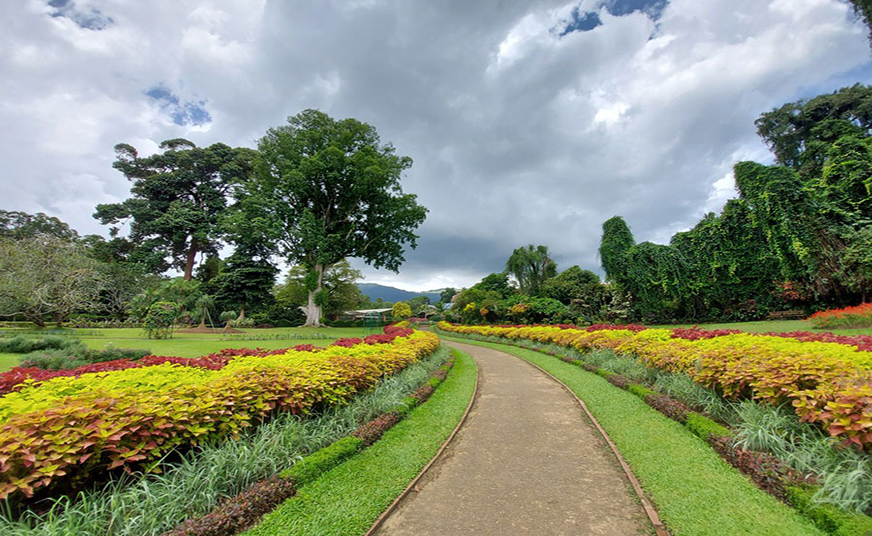Mirijjawela Botanical Garden
A Hidden Gem of Biodiversity in Sri Lanka
Nestled in the Hambantota District of Sri Lanka, Mirijjawela Botanical Garden is an ecological treasure trove that remains relatively unknown to many tourists, making it a serene and peaceful escape for nature lovers and botanical enthusiasts. The garden is located near the Yala National Park and is a perfect spot to visit for those seeking to experience Sri Lanka’s rich plant life and diverse ecosystems, without the crowds of more popular attractions.
Mirijjawela offers a unique opportunity to explore an impressive variety of native flora, learn about botanical conservation, and enjoy the beauty of Sri Lanka’s southern lowlands. The garden is not only a haven for plant species but also plays a significant role in the conservation and study of the island’s diverse plant life.
Destination Overview: Mirijjawela Botanical Garden
Location:
- Mirijjawela Botanical Garden is situated in the Southern Province of Sri Lanka, about 20 km from the town of Tissamaharama and just a short drive from the famous Yala National Park. The garden is easily accessible via the Tissamaharama–Kataragama road, and can be reached by private car or tuk-tuk.
Coordinates: 6.2435° N, 81.3681° E
Historical and Ecological Significance
1.Establishment:
- Mirijjawela Botanical Garden was established in 2006 with the aim of preserving and showcasing Sri Lanka’s rich botanical heritage. The garden is part of the Sri Lanka Department of Agriculture's effort to create a comprehensive collection of plant species and promote agricultural research.
2.Biodiversity:
- The garden spans over 200 acres of land and features a vast collection of native and endemic plants, particularly those from the dry zone of Sri Lanka. This zone is known for its unique ecosystems that differ from the tropical rainforests found in other parts of the island.
- Mirijjawela is designed to mimic a natural ecosystem and hosts an incredible variety of trees, shrubs, herbs, and flowering plants. The garden is a haven for both endemic species and medicinal plants used in traditional Ayurvedic practices.
3.Conservation Efforts:
- The botanical garden serves an important role in conserving endangered species and promoting sustainable plant cultivation. It is also an active center for plant research, with the garden dedicated to the study of local flora, ecological restoration, and agriculture.
Flora and Attractions
1.Native Plant Collection:
- The garden showcases an extensive collection of plants from the dry zone of Sri Lanka. Visitors can see a wide variety of indigenous trees, such as teak, ebony, palmyra palms, and coconut palms.
Some of the more notable trees include the rain tree and the Indian banyan, which can grow into massive, sprawling canopies. These trees play an important role in Sri Lanka’s ecosystem by supporting a range of wildlife.
2.Medicinal Plants:
- As part of Sri Lanka’s Ayurvedic tradition, the garden also houses a large collection of medicinal plants. Visitors can learn about plants like turmeric, cinnamon, sandalwood, and neem, which have been used in traditional healing practices for centuries.
- There are informational displays explaining how these plants are used in both medicinal and cosmetic applications.
3.Tropical Flowering Plants:
- Visitors can explore a variety of flowering plants in the garden, from vibrant tropical flowers like hibiscus to more delicate varieties such as orchids. These flowers attract a range of pollinators, including bees and butterflies, adding another layer of charm to the garden.
4.Wetland Flora:
- There is also a section dedicated to wetland plants, which thrive in the garden’s irrigated zones. The wetland ecosystem features lotus, water lilies, and reeds, adding to the diversity of plant life at Mirijjawela.
5.Eco-Tourism and Nature Walks:
- The garden offers guided nature walks, where visitors can explore the beauty of the flora, learn about sustainable agriculture, and understand the importance of conservation efforts. Expert guides are available to share their knowledge about the plants and the ecosystem.
- Walking trails are well-maintained, allowing visitors to leisurely explore the garden's various sections, including flower beds, tree groves, and herb gardens.
Facilities and Amenities
1.Visitor Center:
- The garden has a visitor center that provides informational brochures, maps of the park, and details about the different species of plants in the garden. Here, you can also find local handicrafts and souvenirs to take home.
2.Botanical Research Area:
- A section of the garden is dedicated to research on agriculture and plant genetics. The research area focuses on promoting sustainable farming practices, preserving endangered plants, and studying the ecological impact of agricultural development.
3.Guided Tours:
- Guided tours are available for those who wish to learn more about the plants and the significance of the garden’s conservation efforts. Tour guides are knowledgeable and can provide insight into the garden’s history, plant species, and its role in preserving Sri Lanka’s biodiversity.
4.Refreshments and Picnic Areas:
- There are areas for picnics and refreshments, making it a pleasant place to relax after exploring the garden. You can enjoy a snack in the serene surroundings while taking in the beauty of the plants and wildlife.
Best Time to Visit
- The best time to visit Mirijjawela Botanical Garden is during the dry season, from November to April, when the weather is pleasant and the garden is at its most vibrant.
- The early morning or late afternoon are ideal times to visit, as the weather is cooler, and the garden is less crowded. Visiting during these times also provides the opportunity to spot some of the local wildlife, such as birds and butterflies, which are most active during these hours.
Travel Information
1.Getting There:
- By Car: Mirijjawela Botanical Garden is about a 5-hour drive from Colombo (approximately 260 km) via the Southern Expressway. It is located 20 km from the town of Tissamaharama, and 40 km from Kataragama. The garden is accessible via well-maintained roads, and private taxis or tourist vehicles are the most common mode of transport.
- By Public Transport: Buses from Colombo and Galle to Tissamaharama are available. From there, visitors can hire a tuk-tuk or a taxi to reach the garden.
2.Entrance Fees:
- Sri Lankan Nationals: LKR 200-500 (subject to change).
- Foreign Nationals: USD 5-10 (subject to change).
- Guided Tours: Additional charges apply for guided tours, typically ranging from LKR 1,000-2,000.
Conclusion
- Mirijjawela Botanical Garden is a hidden gem that offers visitors a chance to explore Sri Lanka’s botanical diversity in a peaceful and well-preserved environment. Whether you are a nature enthusiast, a photographer, or someone interested in traditional plant use, this garden provides a unique opportunity to experience the natural beauty and cultural significance of Sri Lanka’s flora. With its lush plant life, tranquil atmosphere, and commitment to conservation, Mirijjawela is an ideal destination for those seeking a deeper connection with nature.








